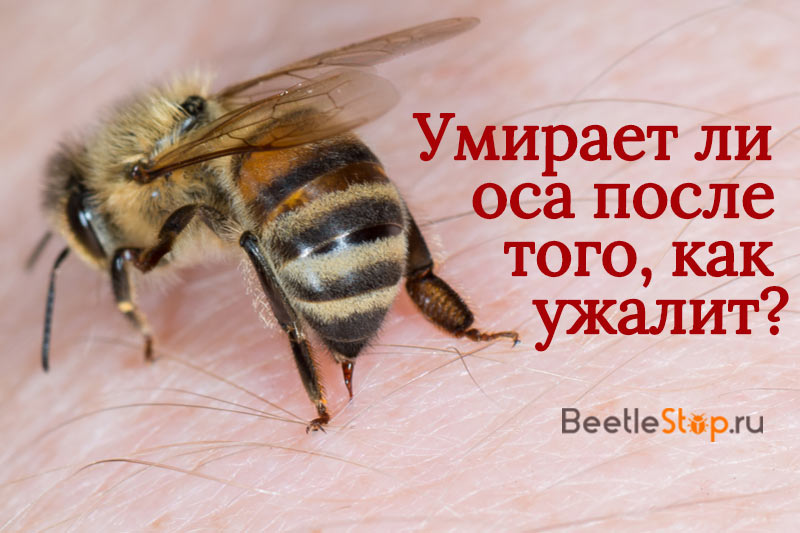Bees and wasps - who die after bites
According to people, wasps are very annoying insects. They can be found much more often in urban conditions than bees. Wasps equip nests on balconies, in yards, in parks. Meat pavilions, trays with sweets are not without their attention. Due to frequent encounters with insects, the chance of being bitten increases significantly. The result of a bite can be a severe allergic reaction and the victim often wonders if the wasp dies after a bite. What happens to the offender after the attack - let's figure it out.

How wasps bite
The main weapon of a wasp is a sting, which is an amazing and complex mechanism. Only females are equipped with the “perfect weapon”, since the sting is nothing more than a modified ovipositor. Located at the end of the abdomen. When the insect is at rest and is not trying to hunt for anyone, the sting is hidden inside the body.
In case of danger, with the help of the muscles the tip of the sting extends outward. When attacked, the tip pierces the victim’s skin and poison is injected. A person experiences pain not at all from a puncture, but from substances that are part of insect venom and cause allergic reactions, burning, itching.
On a note! Wasp sting is one of the sharpest devices in the world.
What happens to a wasp after a bite: through the same muscles, the sting is pulled back, and it flies further if a person does not injure, trying to slam the aggressor. In rare cases, a wasp can bite several times until it runs out of poison.
Does a wasp leave a sting after a bite?
Often disputes arise over who dies after a bite: a bee or a wasp. There is no reason to worry about the fate of the wasp. Her sting is very smooth and she freely removes it from the body of her victim. In practice, an insect generally rarely loses its stinging tool. If for some reason this happens, then there is no threat to his life.
Interesting! Bites of certain species of wasps can be extremely beneficial. In the course of research, scientists found that Brazilian wasps inject poison, which destroys cancer cells. It is also noteworthy that the poison acts selectively and does not damage healthy tissues.
But the fate of a bee after a bite is more tragic. Her sting in appearance resembles a harpoon and is a needle with many notches. The mechanism of action of the tool is similar to the operation of the wasp sting. After the attack, the insect attempts to remove its organ, but as a result, the muscular sac, filled with poison and part of the intestine, comes off. Such an injury is incompatible with the life of a bee, and it dies.
How to remove a sting
Sometimes situations happen that a hornet sting remains in the skin. This happens in case of unexpected death of the offender. For example, having felt that someone is crawling on the skin, a person reflexively tries to kill, and only after that he considers who has encroached on him. The sting should be removed very carefully and accurately, as it is very fragile. If it is broken off, it will be much more difficult to remove a short needle. It is not worth delaying with the removal of a foreign body, because the poison continues to drain into the wound.
The procedure consists of several stages:
- prepare tweezers, and in the absence of a needle or pin, treat with an alcohol-containing solution or calcine on fire;
- grab the edge of the sting with tweezers, as close to the skin as possible and pull it out sharply;
- treat the affected area with a disinfectant solution.
Wasps attack a person if they feel threatened, dangerous. When stinging individuals appear, you should not actively wave your hands, trying to scare them away. Such behavior can provoke even more aggressive aggression from wasps.


 (votes: 35, average rating: 4,83 out of 5)
(votes: 35, average rating: 4,83 out of 5)
Thanks for the info, it was interesting to read.